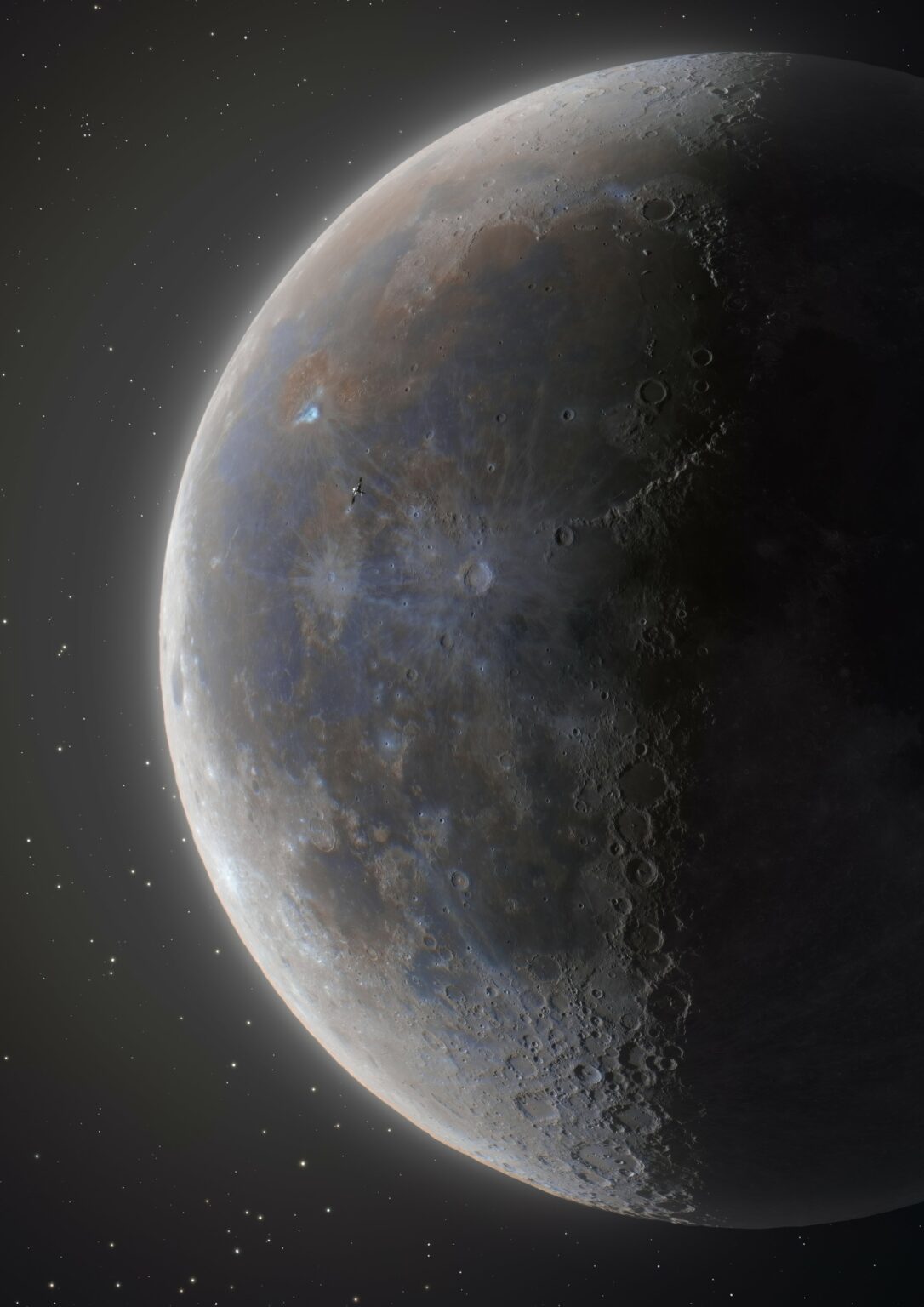The presented image was taken by astrophotographer Andrew McCarthy on June 21. He is well known for his very spectacular portraits of the Moon. But the new image differs from most other works in one detail. If you look closely, you can see a very remarkable object in the upper left part of the lunar disk. This is the ISS.

McCarthy has previously published images of the ISS transit on the Moon photo. But on them, the station was in shadow, and it could be seen as a dark silhouette against the background of the lunar disk. At the same time, the ISS was illuminated by the Sun, which allowed us to directly view its main modules.
In McCarthy’s images, the ISS is located in a kind of triangle between the 96-kilometer Copernicus crater (lower right corner), the 29-kilometer Kepler crater (lower left corner) and the 40-kilometer Aristarchus crater (upper left corner).

All three formations are well preserved and have a high albedo, which indicates their relatively small age by lunar standards. Thus, the Kepler crater is still surrounded by light rays consisting of matter ejected upon impact. Over time, it darkens, so the presence of a radiation system is a very reliable indicator of the youth of the formation. And the same Aristarchus crater, in principle, is the brightest structure on the Moon. Its albedo exceeds the albedo of most lunar impact formations by two times, which makes it possible to notice it even with the naked eye.
You can also admire the fantastic photos of the recent parade of planets.
Follow us on Twitter to get the most interesting space news in time
https://twitter.com/ust_magazine
